How much of a performance boost does the eGPU dev kit provide?
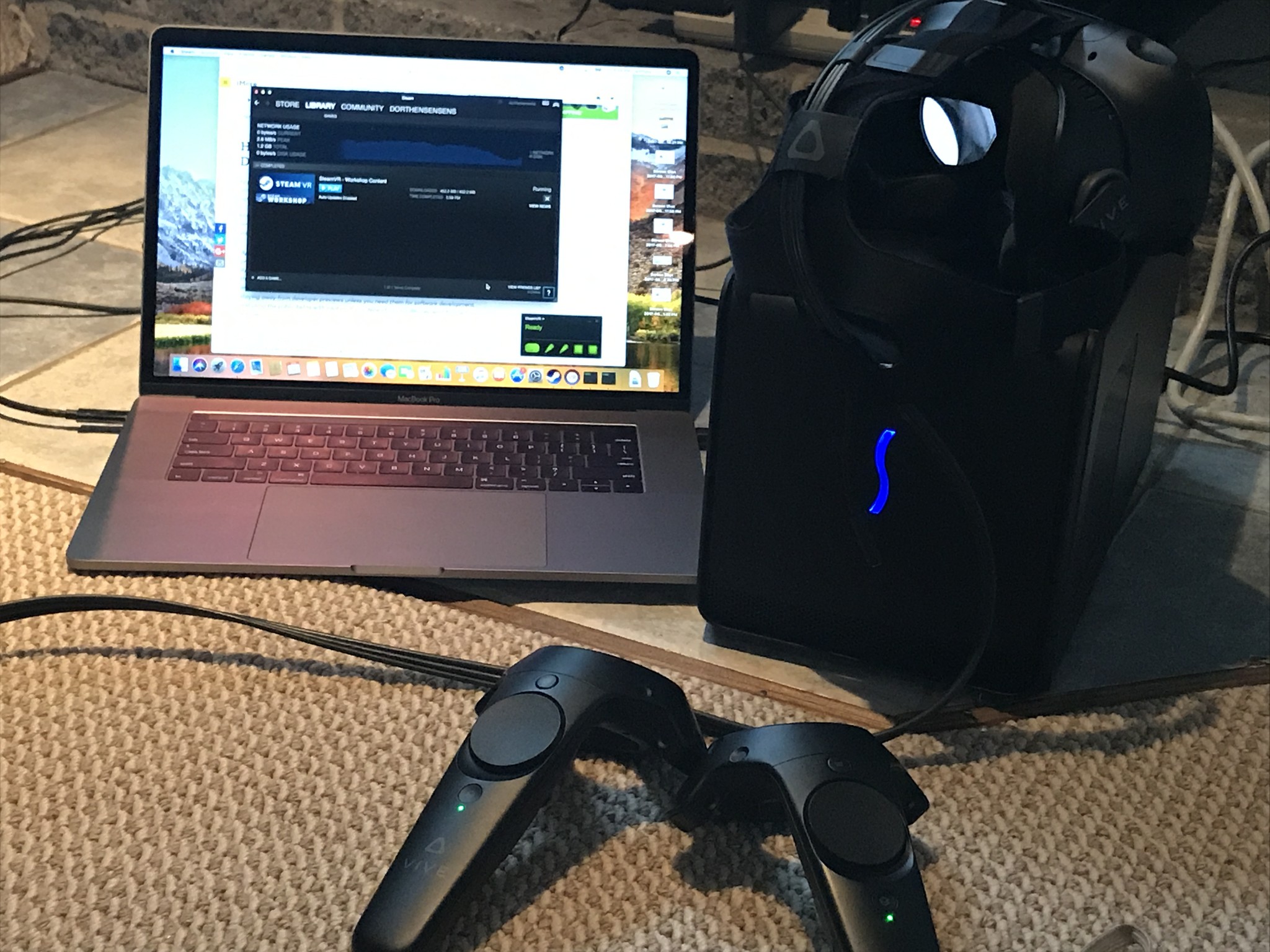
In spite of the reasonable cost of Apple's virtual reality (VR) external graphics processing unit (eGPU) development kit, you may be wondering if the price ($599) is worth the added benefit of getting a full-sized desktop GPU. Here are some benchmarks to help you decide!
What's inside the box
Before we get to the benchmarks, you should take a look at Russell Holly's awesome introductory article to on how to set up your eGPU, where he goes through all of the details of the dev kit. But here's the skinny on what's inside the box.
Graphics processing unit
You get AMD's RX 580 8GB desktop class GPU based on the Polaris architecture. No more mobile, low power, or gimped performance. You get the full PCIe card that you install yourself into the eGPU enclosure. Although Vega is AMD's newest technology, the Polaris architecture has some of the best performance per watt numbers in the desktop industry. It also has the benefit of being available right now (Ethereum miners be damned!) as opposed to the Vega architecture that has only just released.
The RX 580 is considered a mid-tier GPU at the moment and is considered on the lower end of the performance spectrum when it comes to VR capabilities. That being said, both manufactures of the major VR headsets (Oculus Rift and HTC Vive) insist that all developers create VR content with minimum specification GPUs that are of an older generation and a little bit less capable than the RX 580.
The eGPU enclosure
The dev kit comes with a Sonnet external GPU chassis with Thunderbolt 3 and 350W power supply. Although Apple's release notes say that you can only plug in a single 8-pin power connector, I happened to notice that the power supply does have a second shrink-wrapped 8-pin power connector for, you know, maybe upgrading the GPU in a future article (coughs).
USB-C to USB-A hub
It also comes with a Belkin USB-C to 4-port USB-A hub. This is needed as the HTC Vive VR headset requires the older USB ports for connectivity. One more thing to mention is that you also get a promo code for $100 towards the purchase of an HTC Vive, so you can make those sweet VR applications!
Get to the benchmarks!
Just a few words to mention before getting to the benchmarks. This is not a comprehensive scientific test of the eGPU capabilities. It's a quick and dirty look at what you can expect for your rig. Although the internal GPUs in Macs will vary, for transparency's sake, my MacBook Pro has both the Intel HD Graphics 530 and a Radeon Pro 450 2GB. Both of those are mobile versions of GPU architectures. Apple's macOS will automatically switch between those two internal GPUs depending upon the type of work that needs to be done. If minimal calculations are required, the more power-efficient Intel GPU will run. If needing to run a 3D application, the slightly more powerful Radeon internal GPU will run.
Master your iPhone in minutes
iMore offers spot-on advice and guidance from our team of experts, with decades of Apple device experience to lean on. Learn more with iMore!
Well, let's dive in!
Unigine Valley
Here we are comparing the internal Mac GPU with the RX 580 inside the eGPU. This benchmark runs with the Extreme HD preset using OpenGL at 1080p.
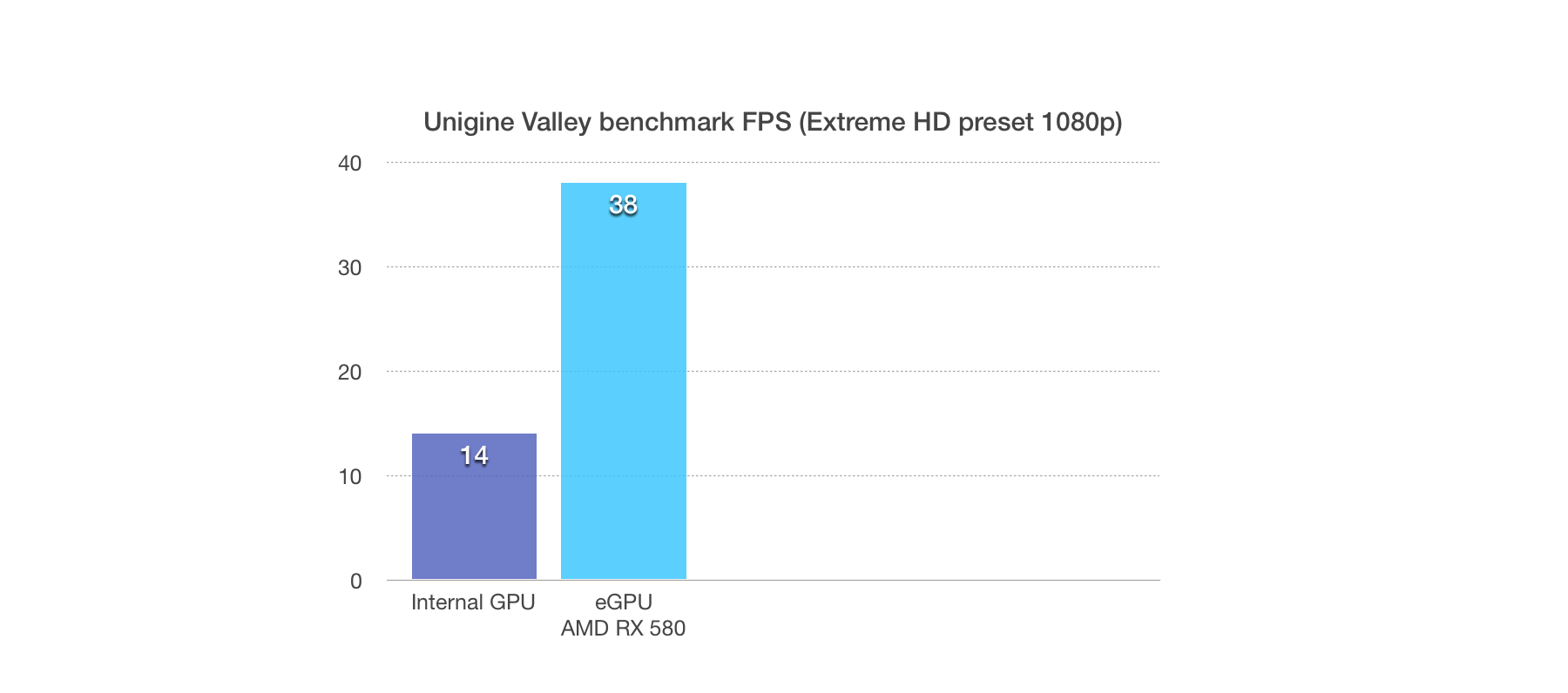
Unigine Heaven
Here we are comparing the internal Mac GPU with the RX 580 inside the eGPU. This benchmark runs with the Extreme settings using OpenGL at 1080p.
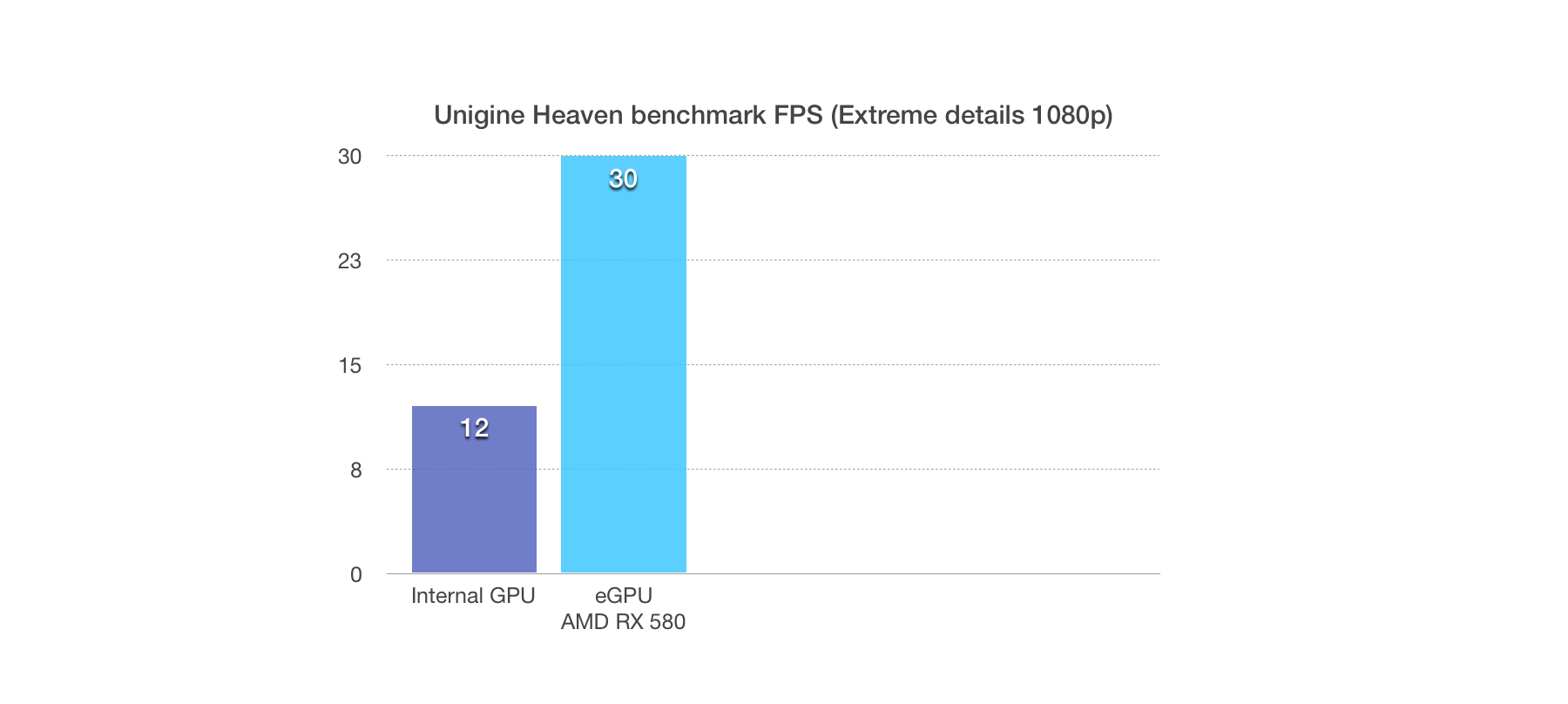
Tomb Raider 2011
Here we are comparing the internal Mac GPU with the RX 580 inside the eGPU. I'm using the older Tomb Raider from 2011 so that I can run a comparable (non-scientific) benchmark on a game that runs on both Mac and Windows (See below).
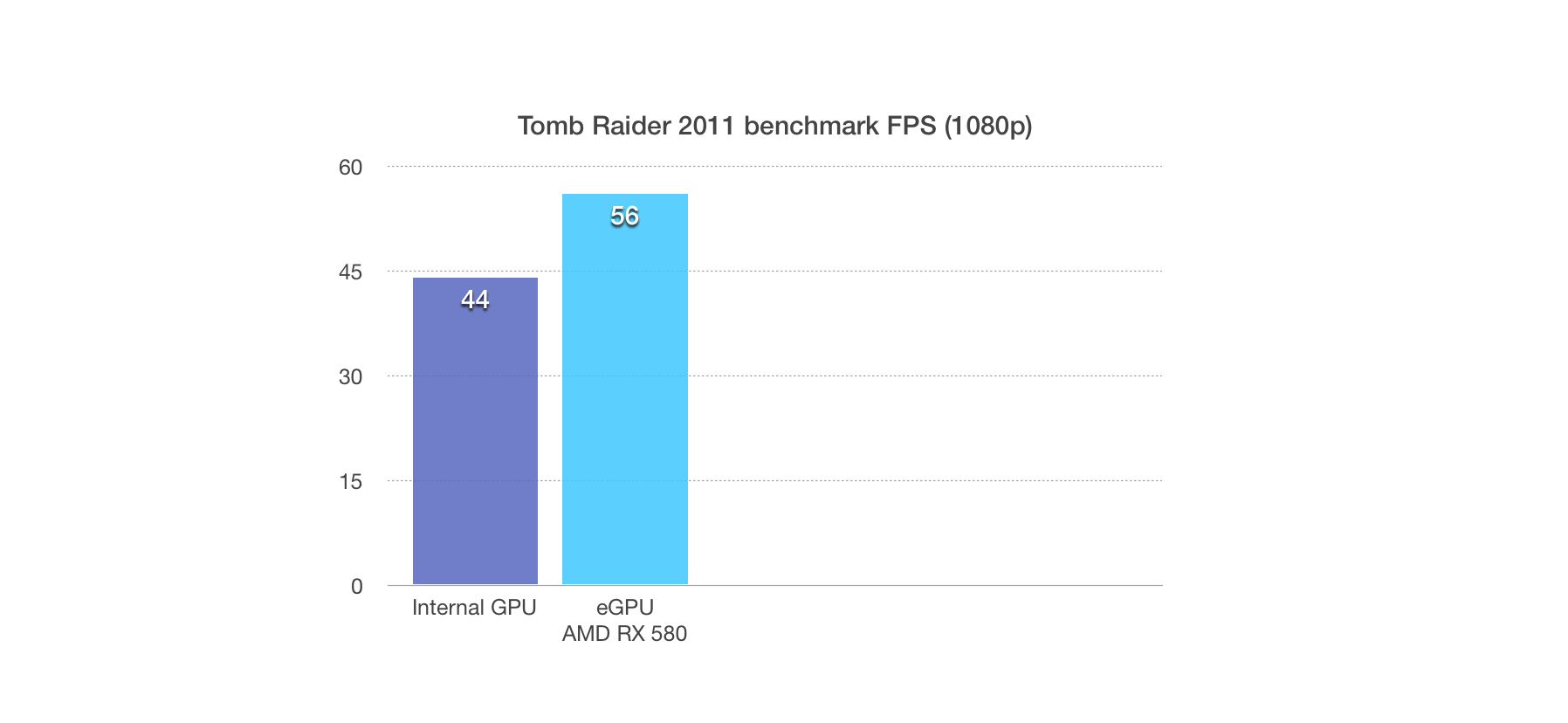
Mac eGPU vs Windows 10 PCIe
Although not a 1-to-1 comparison, I decided to compare the RX 580 in the eGPU on macOS High Sierra with the same card installed in my windows 10 PC via a PCIe port. The MacBook Pro I am using has a Skylake i7 CPU running at 2.6GHz. The Windows PC I am using also has a Skylake i7 CPU (6700k) but it's running at 4GHz. Although not a fair comparison in terms of the CPU, these benchmarks are not CPU-intensive and as such the effect of the weaker MacBook Pro CPU is likely minimal. I would have liked to do a comparison via bootcamp but the eGPU is not supported under that environment.
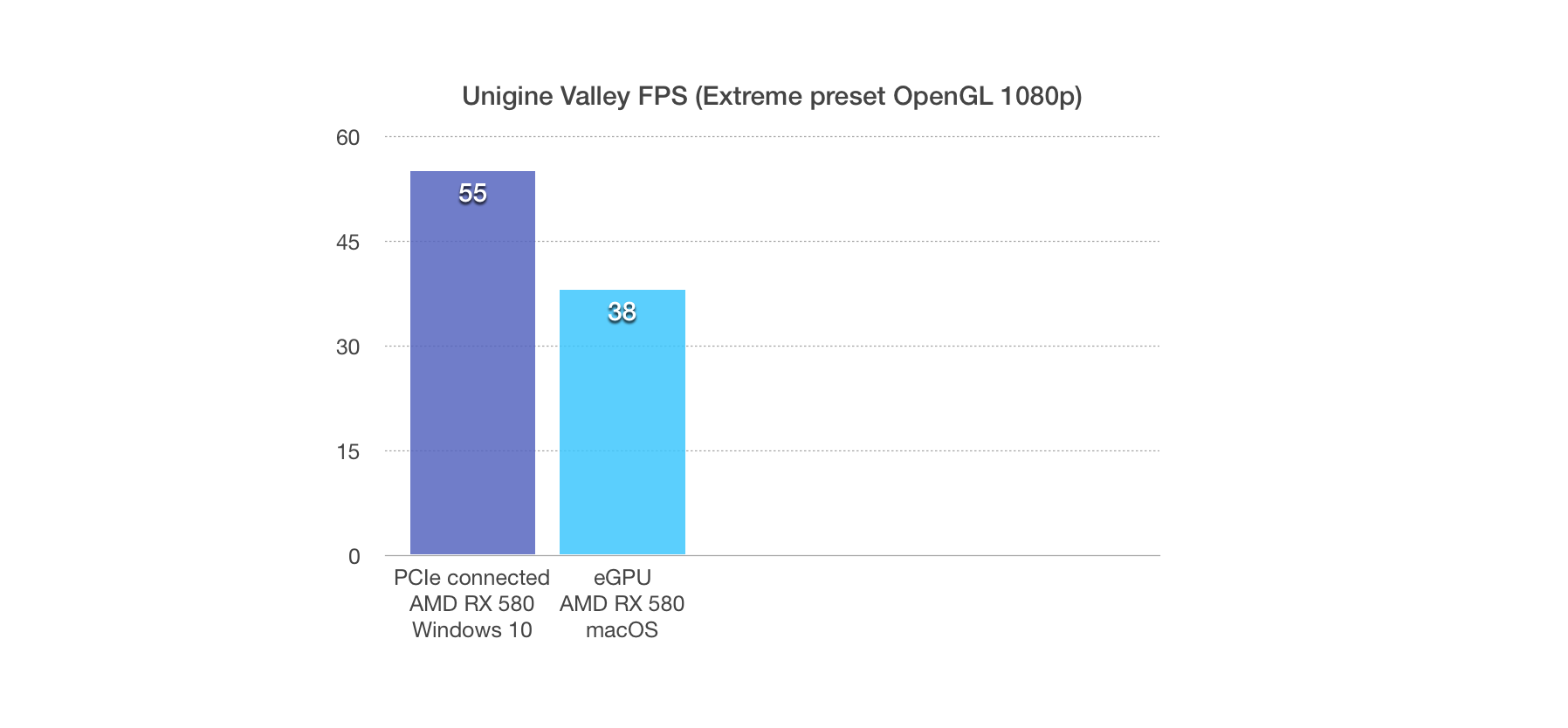
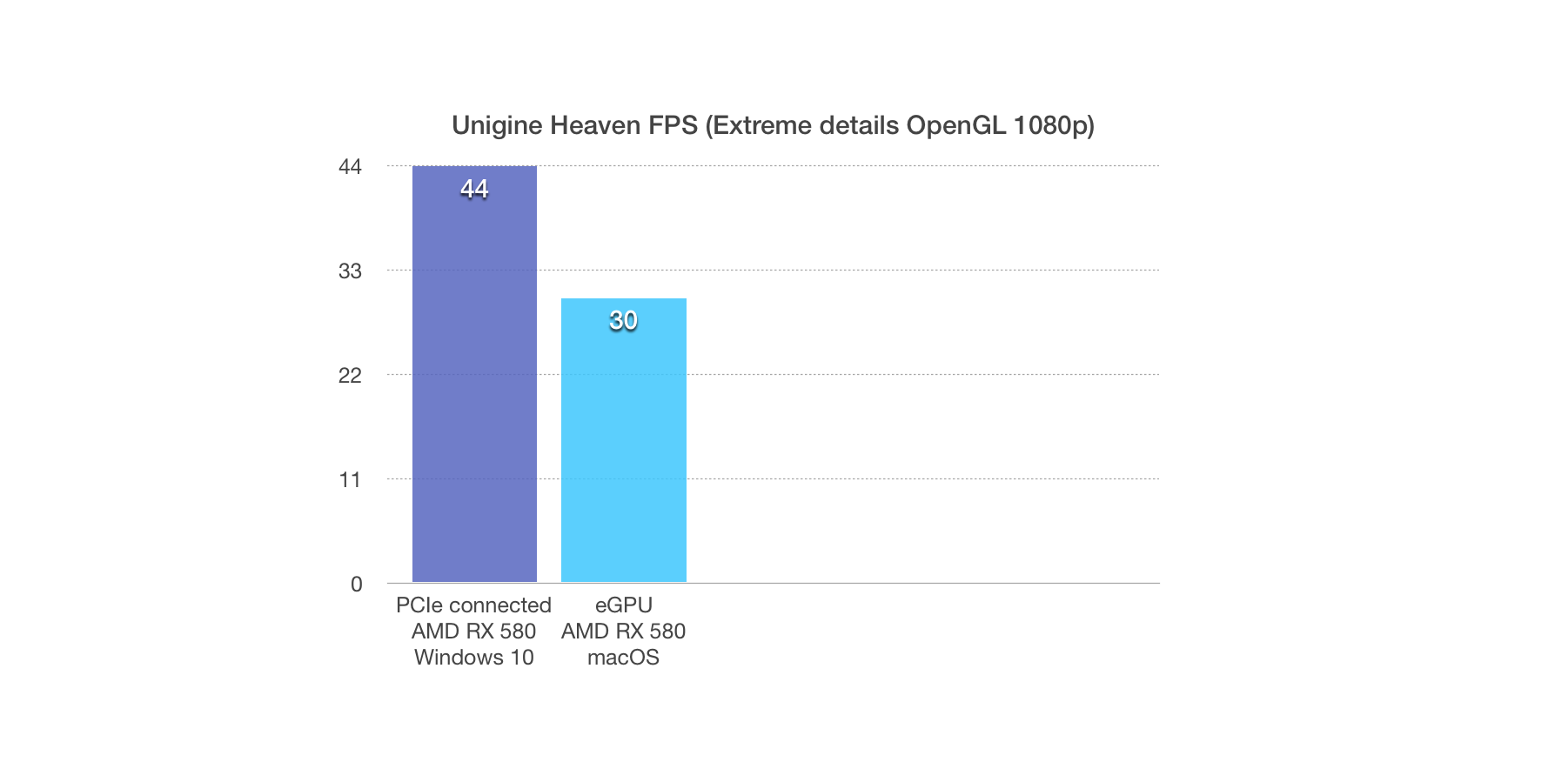
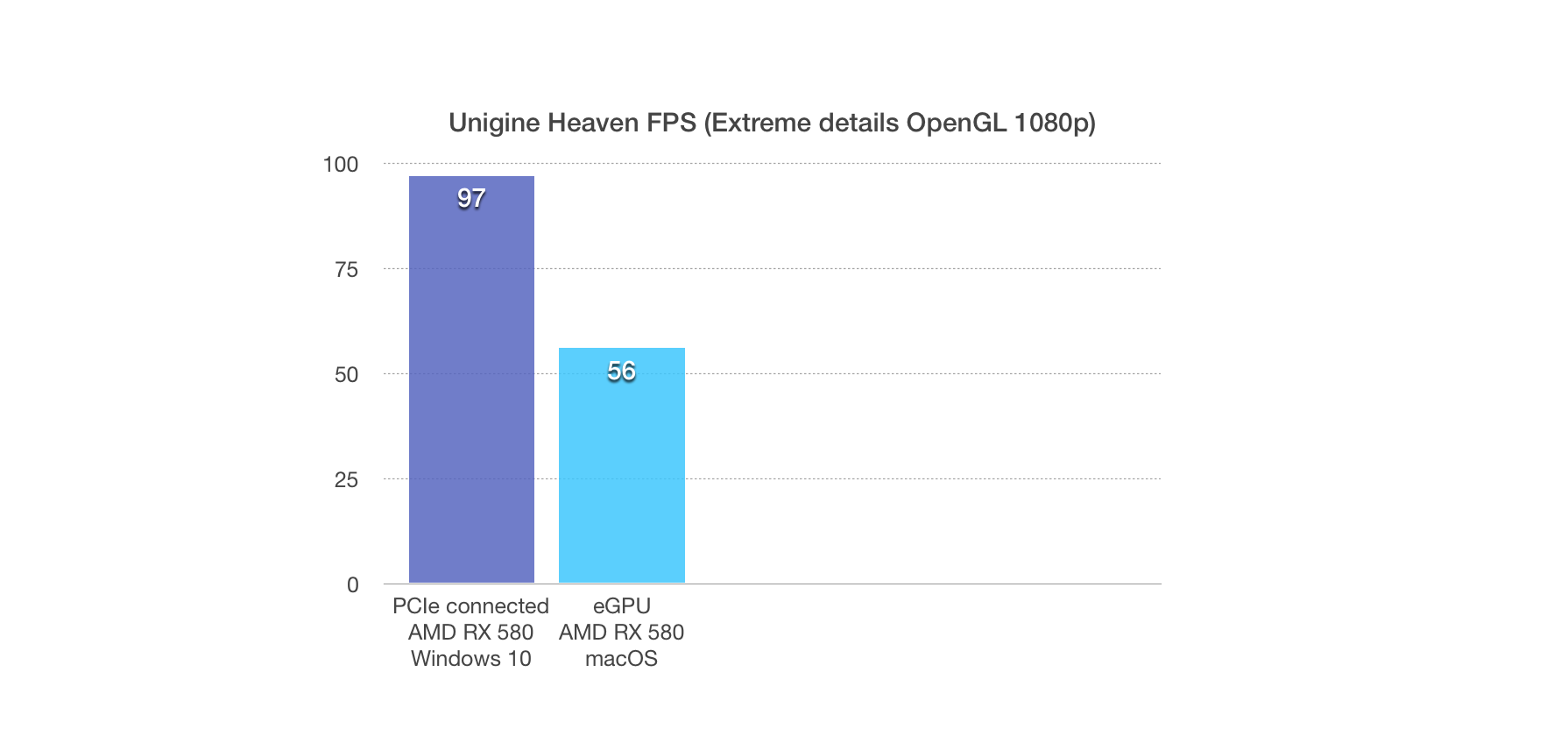
Final Thoughts
You definitely see a very good performance increase in graphics processing using the eGPU vs. the internal Mac graphics. It's a bit disappointing that there is a disparity between the macOS benchmarks and the Windows 10 benchmarks. Although I don't expect full 1-to-1 equivalency in performance between OSes, I do hope that since these are beta drivers on a beta OS, we'll have an increase in performance over time. So what do you think? Are the eGPU performance gains worth it for your VR application development? Let us know in the comments!


